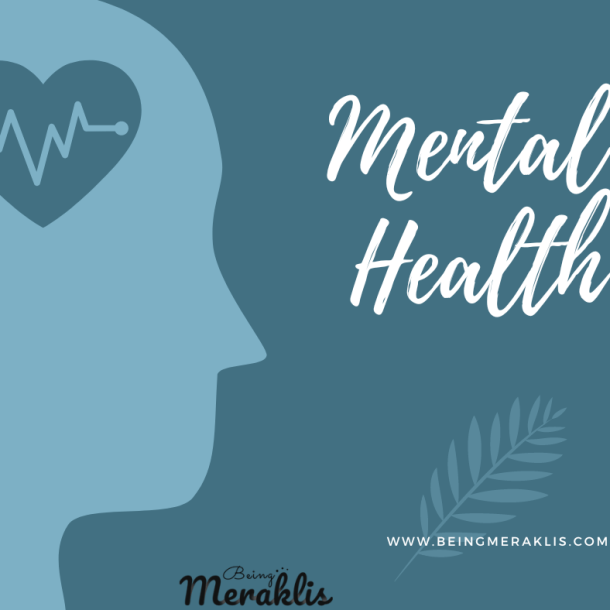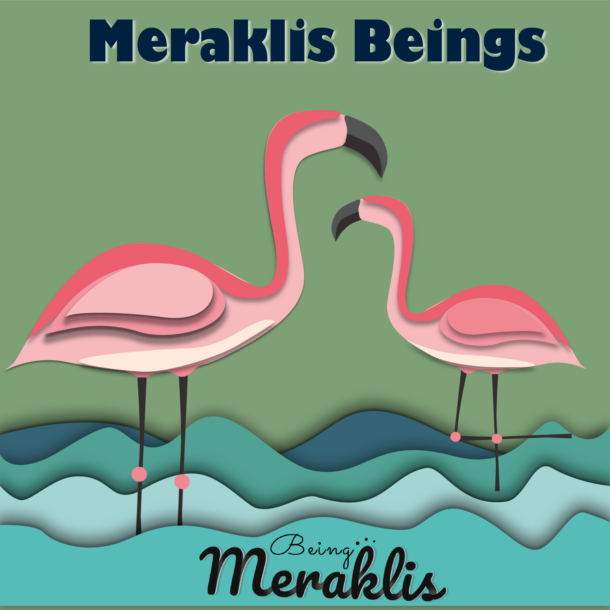Ep 106 – Is all stress bad? What happens within our bodies when we are stressed?

Are we even functioning adults if we haven’t experienced stress in our fast-paced lives today? Stress is a common phenomena that most of us experience no matter our age or our field of work. We often quote stress as a villain, but is it all bad? Can we learn to manage our stressors and maintain equanimity within regardless of the circumstances? We will explore this and more in today’s episode.
Hello and welcome to a new episode of the Own Your Everyday series. I’m your host and self-awareness coach Shwetha Sivaraman. This is the first part of the two part series on stress and dealing with it. In this episode, we decode stress, how it works, explore if all stress is bad, and what signs to look for chronic stress.
Let’s first begin with understanding what is stress?
Stress is nothing but a response to a real or preceived threat or challenge. The first thing we need to realise is that stress is a response, our response to the situation or circumstance we are in. And this could be a real threat or challenge in the world or it could be an imagined threat or challenge, regardless of whether its real or imagined, the response is real – physically, biologically, and physiologically, we experience the stress response in our bodies and minds.
There are 4 parts to a stress response
1. A trigger – the event or the stressor that is the cause of the reaction
2. A Negative appraisal of the trigger – We are not stressed when any event happens. We are stressed when we feel its an unfavorable event or context – unfavorable to us in someway.
3. A response – The stress is the response – we get tensed, angry, frustrated, react impulsively while physiologically the body goes into a fight or flight mode and
4. Return to baseline – We don’t really remain in that fight or flight mode normally. Once the trigger passes, our response comes to a natural end and we return to our baseline mode of operation. Think of a deer being chased by a tiger. When it realises the tiger is out to hunt, it goes on complete alert mode, adrenaline pumping in its veins, eyes fully dilated, goes into flight mode to escape the predator. But once it outruns the tiger and escapes, there is a return to baseline. The heart rate comes back to its resting rhythm, the eyes are no longer fully dilated, the deer goes back to grazing as if nothing happened.
This is how our biological stress mechanism is wired, to help us survive against threats in the environment. The stress mechanism ensures all resources needed to survive are made available to us in a fraction of a second, and to recede back to a resting rate once the threat passes.
How Stress Works?
Let’s look at what happens within our bodies when we are stressed
It all starts with the stressor – this can be anything that activates the stress response in us. The stressor causes an emotional disturbance in us that triggers the emotional processing center in our brains – The amygdala. The amygdala sends a distress signal to the hypothalamus – the command center in the brain that controls involuntary functions in the body like breathing, heartbeat, blood pressure. The hypothalamus activates the sympathetic nervous system our fight, flight, or freeze response by sending signals through the autonomic nerves to the adrenal glands. The activation of adrenal glands leads to the discharge of the hormone epinephrine (also known as adrenaline) within the bloodstream.
Epinephrine circulates through the body, it brings on a number of physiological changes like faster heart beat, more blood being pushed to our limbs, muscles, heart, and other vital organs to give us strength to fight, increase in pulse rate, breathing rate, more oxygen is pushed to the brain to increase alertness and improve sense perception. Epiniphrine increases release of blood sugar, fats from stored fat in the body etc. It is said that the amygdala and the hypothalamus start this even before our visual centers manage to grasp and register what’s going on.
As epinephrine subsides, the HPA axis is activated – Hypothalamus pituatiary gland, and adrenal glands. The HPA axis continues sending the signals to keep the sympathetic nervous system or the fight, flight, or freeze mode on. If the perception of a threat continues, the hypothalamus activates hormonal signals to release cortisol the helps the body rev up and continue staying on high alert. Once the threat passes, cortisol levels fall, and the parasympathetic nervous system or the rest and digest mode is activated that dampens the stress response.
Now, Is all stress bad?
No. Through the many examples we’ve discussed we can sense that short-term stress is necessary and helpful.
The response to short-term stress is critical for survival.
Our response to short-term stress is necessary for our survival. Without that response we cannot jump off the road when there’s an approaching speeding vehicle or cover our head instantly when we notice something dropping from the cieling. These are inherent survival instincts to help us stay alive. Short-term stress is like pressing the gas pedal to accelerate and mitigate an impending threat. But what happens if we don’t take the foot off the gas pedal? Things go from good to worse when we experience chronic stress and are stress reponse is activated continously.
In our modern world today, our minds are so clouded with overinformation from all corners, the stress response is always on – we continuously perceive threats real and imagined and stay in a state of chronic stress. Will i lose my job because I turned in my presentation late? What about my home loan EMI? Will I ever find my soulmate? What about my child’s future? Will they succeed in life? So in our fast-paced lives where there are multiple triggers the cortisol continues to be released to continue keeping the gas pedal on, never allowing the body to hit the brakes and activate the parasympathetic nervous system.
When the body continuously remains in the state of fight, flight, or freeze, our bodies are using up resources at a much faster rate and are allowing no time to rest, detox, replenish dead cells, restore organic functions.
Think about it when a deer is being hunted down by a tiger, the stress response is activated to survive – all resources are optimised and geared only towards that primary goal. That means when the stress response is on – no cells are being repaired, no organs are detoxing. None of our restorative and repair functions happen when the stress mode is on as the body is gearing for a fight. Additionally, when we are constantly stressed, our sleep is the first thing that goes out the window – taking away the only other opportunity has bodies have to rest and replenish.
Over time chronic stress can lead to physical consequences like headaches, muscle pains, fatigue, mental issues like anxiety, restlessness, irritability, behavioural changes like overeating/undereating, addiction to substances – tobacco, alcohol, drugs, extreme moodswings, lack of motivation or focus.
What are signs to look for to assess whether you’re in a chronic state of stress?
1. Examine your routines – Is there stability in them or do you fly off the handle?
2. Examine your moods
3. Examine your interactions
4. Have you been doing too much of or too less of something?
5. How healthy is your diet?
6. Are you in control of your time?
7. How fulfilled do you feel with your day or progress at the end of each day?
So here’s your own your everyday tip for this week – Watch for signs of stress in your life and try and distinguish between short-term stress and chronic stress. Look out for patterns and try and observe most common stressors in your life – what are situations and context that make you feel most stressed? What people or interactions stress you out the most? What activities are you engaging in on days you feel most stressed? Keep these notes ready before next week’s part 2 of the stress management series where we will delve into strategies to manage stress.
Until we meet again, this is Shwetha signing off. Hoping you have a fabulous and stress-free week ahead.




